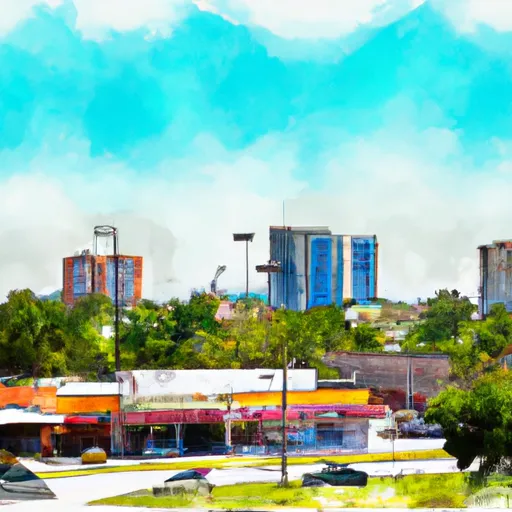-
 Snoflo Premium
Snoflo Premium
Get unlimited access to all our content
With no Ad interruptions! - Start Your Free Trial Login with existing account
Homestead
Eden Index
Climate
5.5
•
Recreation
6.6
•
Community
1.8
•
Safeguard
5.0/10

Homestead, Florida, located in Miami-Dade County, offers a unique blend of climate, hydrology constituents, and outdoor recreation opportunities. The city experiences a tropical monsoon climate characterized by hot and humid summers and mild winters. Summers are typically long, with temperatures averaging in the 80s and high humidity levels. Winters are pleasant, with temperatures ranging from the 60s to 70s.
Homestead benefits from its proximity to the Biscayne Bay and Everglades National Park, resulting in diverse hydrology constituents. The city is surrounded by a network of canals, including the Miami Canal and C-102 Canal, which serve as important waterways for both recreational activities and irrigation purposes.
Outdoor enthusiasts are drawn to Homestead for its abundance of recreational opportunities. The Everglades National Park is a major highlight, offering activities like hiking, camping, bird-watching, and airboat tours. Additionally, Biscayne National Park provides opportunities for boating, fishing, snorkeling, and scuba diving, allowing visitors to explore vibrant coral reefs.
With its ideal climate, diverse hydrology, and access to breathtaking natural landscapes, Homestead, Florida, offers a wide array of outdoor recreational activities for nature lovers and adventure seekers.
What is the Eden Index?
The Snoflo Eden Index serves as a comprehensive rating system for regions, evaluating their desirability through a holistic assessment of climate health, outdoor recreation opportunities, and natural disaster risk, acknowledging the profound impact of these factors on livability and well-being.
Climate Health Indicator (CHI): 5.5
Homestead receives approximately
1563mm of rain per year,
with humidity levels near 82%
and air temperatures averaging around
24°C.
Homestead has a plant hardyness factor of
10, meaning
plants and agriculture in this region tend to thrive here all year round.
By considering the ideal temperature range, reliable water supplies, clean air, and stable seasonal rain or snowpacks, the Climate Health Indicator (CHI) underscores the significance of a healthy climate as the foundation for quality living.
A healthy climate is paramount for ensuring a high quality of life and livability in a region, fostering both physical well-being and environmental harmony. This can be characterized by ideal temperatures, reliable access to water supplies, clean air, and consistent seasonal rain or snowpacks.
Weather Forecast
Streamflow Conditions
Southern Florida
Area Rivers
Southern Florida
Snowpack Depths
Southern Florida
Reservoir Storage Capacity
Southern Florida
Groundwater Levels
Recreational Opportunity Index (ROI): 6.6
The Recreational Opportunity Index (ROI) recognizes the value of outdoor recreational options, such as parks, hiking trails, camping sites, and fishing spots, while acknowledging that climate plays a pivotal role in ensuring the comfort and consistency of these experiences.
Access to outdoor recreational opportunities, encompassing activities such as parks, hiking, camping, and fishing, is crucial for overall well-being, and the climate plays a pivotal role in enabling and enhancing these experiences, ensuring that individuals can engage in nature-based activities comfortably and consistently.
Camping Areas
| Campground | Campsites | Reservations | Toilets | Showers | Elevation |
|---|---|---|---|---|---|
| Long Pine Key - Everglades National Park | None | 8 ft | |||
| John Pennekamp - Coral Reef State Park | None | 11 ft | |||
| Larry and Penny Thompson Park | None | -1 ft | |||
| CB Smith Park | None | 6 ft | |||
| Markham Park | 86 | 10 ft |
Catastrophe Safeguard Index (CSI):
The Catastrophe Safeguard Index (CSI) recognizes that natural disaster risk, encompassing floods, fires, hurricanes, and tornadoes, can drastically affect safety and the overall appeal of an area.
The level of natural disaster risk in a region significantly affects safety and the overall livability, with climate change amplifying these risks by potentially increasing the frequency and intensity of events like floods, fires, hurricanes, and tornadoes, thereby posing substantial challenges to community resilience and well-being.
Community Resilience Indicator (CRI): 1.8
The Community Resilience Indicator (CRI) recognizes that education, healthcare, and socioeconomics are crucial to the well-being of a region. The CRI acknowledges the profound impact of these elements on residents' overall quality of life. By evaluating educational resources, healthcare accessibility, and economic inclusivity, the index captures the essential aspects that contribute to a thriving community, fostering resident satisfaction, equity, and social cohesion.

